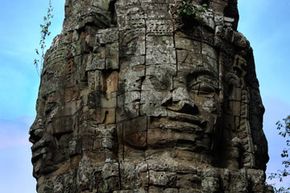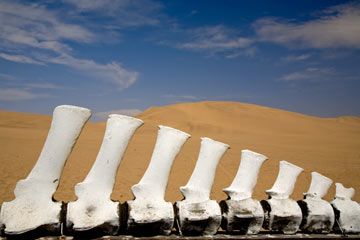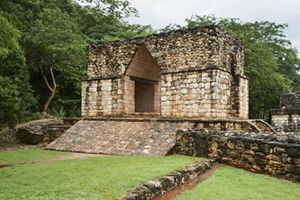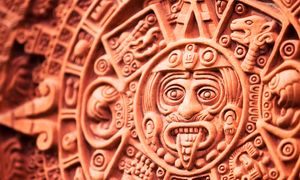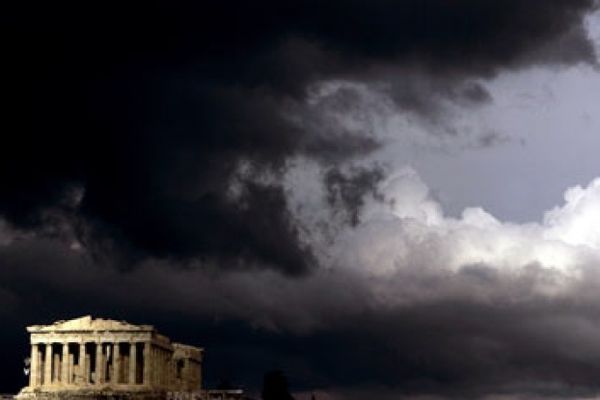Key Takeaways
- Civilizations require several factors to thrive, including a large, centralized population, surplus of food, centralized government, religious unity, complex labor division and taxes.
- A deficiency in any of these areas can lead to collapse.Historical collapses often result from multiple factors, including warfare, disease, environmental changes affecting food supply, economic sustainability issues and internal decay, as evidenced by the falls of the Roman Empire, Mayan civilization and the Anasazi people.
- The decline of civilizations is complex, often involving interplay between external pressures (like invasions or environmental changes) and internal factors (like economic decline or religious crises).
Nearly every continent has its ruins -- places where only stones tell the tale of fallen civilizations. They might lay buried under the Earth, in the shade of jungle canopy or amidst the teeming industry of a modern city. Yet they all raise the same questions: How could something so great all but vanish? Why do civilizations collapse?
Before we ponder how a civilization falls, let's take a look at how one thrives. A fire, for example, demands oxygen and fuel. Remove either from the equation and the flame gutters out. Civilizations are far more difficult to define, but still demand a number of requirements to thrive.
Advertisement
Historians offer varying lists of criteria for civilization, but most of the lists include the following important factors:
- A large, centralized population
- A surplus of food
- A centralized government
- Religious unity
- A complex division of labor
- Money collected through taxes
This list hardly covers everything, but it should give you an idea of the various glues holding a civilization together, as well as what can go wrong.
Naturally, any harm to that large, centralized population can potentially lead to a civilization's collapse. Such a blow might come in the form of genocidal warfare, epidemic disease or geological upheaval. The Mayan civilization, for instance, faded from prominence after the 16th century Spanish invasion brought warfare, disease and a foreign culture intent on spreading its own systems of faith and governance. The Mayan population was severely diminished, and what was left changed under the rule of its conquerors. This pattern exists throughout recorded history, dating back even to the earliest known civilization of Sumer, in Mesopotamia, which collapsed under the strain of recurring invasions in the second millennium B.C.
Environmental changes can also wipe out a civilization, especially if they impact the food supply. Archaeologists believe a 300-year drought decimated the Akkadian empire (also in Mesopotamia) between 2200 B.C. and 2500 B.C. Scientists also cite drought as the reason for the fall of Cambodia's Khmer civilization between the 9th and 14th centuries.
Other collapses elude easy categorization and entail various factors playing out over centuries. It's impossible to put a finger on a single reason that the Roman Empire fell, but discussion often leads scholars to discussions of outer attrition by barbarians tribes and inner decay.
The Roman economic engine depended on conquest and slavery, which proved unsustainable in the long run. Less conquest eventually meant fewer cheap slaves, which in turn meant fewer human resources to keep the wheels of industry, agriculture and infrastructure turning. Meanwhile, Rome's rulers debased the currency through oppressive taxation and inflation.
The ancient Anasazi, or Pueblo, people of North America pose yet another interesting model for civilization collapse. They practiced agriculture and astronomy. They built elaborate cliff dwellings yet eventually abandoned them. Historians point to numerous factors in their decline, including warfare and cooler temperatures in A.D. 900 that hampered farming. Still other studies attribute their downfall to a divisive religious crisis that caused many of the Puebloans to migrate south to follow a new evangelical faith.
From population to religion, a number of factors play into the subsistence of civilization. If enough of them fail, however, things inevitably fall apart.
Explore the links on the next page to learn even more about human civilization.
Advertisement
